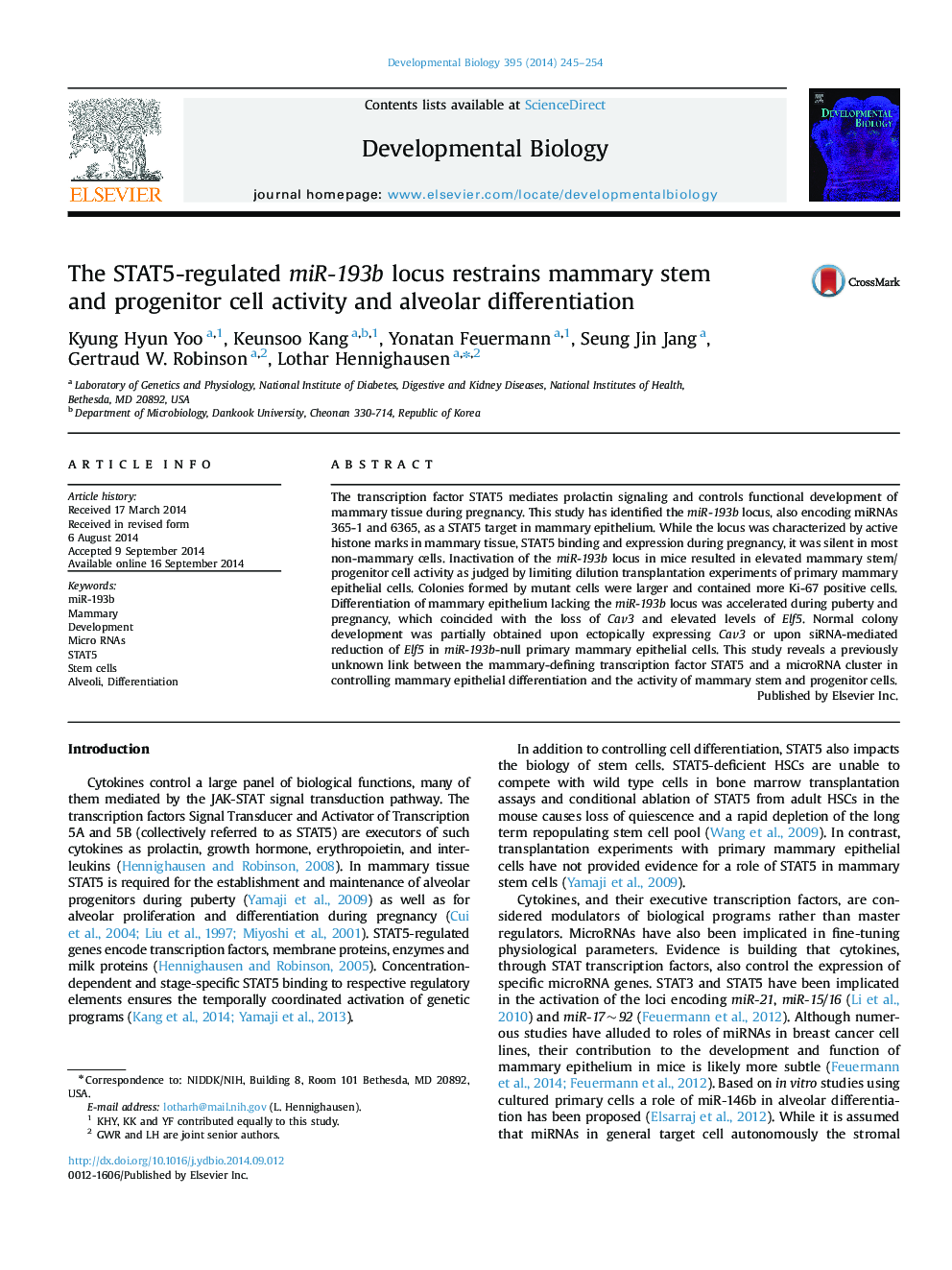| Article ID | Journal | Published Year | Pages | File Type |
|---|---|---|---|---|
| 10931723 | Developmental Biology | 2014 | 10 Pages |
Abstract
The transcription factor STAT5 mediates prolactin signaling and controls functional development of mammary tissue during pregnancy. This study has identified the miR-193b locus, also encoding miRNAs 365-1 and 6365, as a STAT5 target in mammary epithelium. While the locus was characterized by active histone marks in mammary tissue, STAT5 binding and expression during pregnancy, it was silent in most non-mammary cells. Inactivation of the miR-193b locus in mice resulted in elevated mammary stem/progenitor cell activity as judged by limiting dilution transplantation experiments of primary mammary epithelial cells. Colonies formed by mutant cells were larger and contained more Ki-67 positive cells. Differentiation of mammary epithelium lacking the miR-193b locus was accelerated during puberty and pregnancy, which coincided with the loss of Cav3 and elevated levels of Elf5. Normal colony development was partially obtained upon ectopically expressing Cav3 or upon siRNA-mediated reduction of Elf5 in miR-193b-null primary mammary epithelial cells. This study reveals a previously unknown link between the mammary-defining transcription factor STAT5 and a microRNA cluster in controlling mammary epithelial differentiation and the activity of mammary stem and progenitor cells.
Related Topics
Life Sciences
Biochemistry, Genetics and Molecular Biology
Cell Biology
Authors
Kyung Hyun Yoo, Keunsoo Kang, Yonatan Feuermann, Seung Jin Jang, Gertraud W. Robinson, Lothar Hennighausen,
